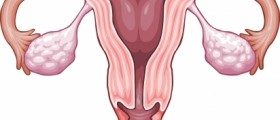
A lot of women experience pelvic pain from time to time but there are some who experience chronic pelvic pain. If that is the case, women should go to the doctor if they are unable to relieve the pain with the use of home remedies. Pelvic pain occurs in the pelvic region, which is in the area below the bellybutton and between the hips. A woman is considered to be suffering from chronic pain if the pain lasts for a period linger than half a year. It is important to know that chronic pelvic pain can be a separate condition but it can also be a symptom of some other ailment. Women need not worry too much because the pain is treatable but the actual cause must be discovered first.
Symptoms of chronic pelvic pain
There are lots of signs of chronic pelvic pain and women should get to know them in order to be able to identify them if they occur. There are some signs which occur more often than others. Some of the more common signs are pain which is severe and steady, intermittent pain as well, dull aching, sharp pain, cramping and pressure in the pelvic area. In addition to these signs of chronic pelvic pain there are some others which do not occur as often but are still possible. Some of these symptoms include pain during intercourse, pain while having a bowel movement and pain while sitting down. Every woman wonders when she should be going to the doctor’s and women should know that they should go in cases when the pain makes them unable to perform normal daily activities or when the symptoms start getting worse. Treatment and drugs
In case when there the pain caused by chronic pelvic pain is too much to bear, women should go to the hospital. When they do, they should make a list of question they are going to ask the doctor. It is not a bad thing to bring someone who is close to them, like a family member or a friend, in order to remember as much information as it is possible. When a woman arrives to the hospital, the doctor will first discuss with her about certain things, like the symptoms and any history. In almost all cases there is need for a physical exam. After that, the doctor should be able to make a diagnosis and according to that diagnosis, he or she will discuss the way of treatment with the patient. In almost all cases certain medications are prescribed. However, women should know that the underlying cause of the chronic pelvic pain will determine the type of medications. Pain relievers such as Aspirin and ibuprofen are often used in these situations. However, these pain relievers will only partially solve the problem. Hormone treatments are another option because it is not uncommon that the hormonal changes which occur during the menstrual cycle are the cause of the pain. If this is the case, the patient will be prescribed with birth control pills or some other hormonal medications. In addition to these, normally antibiotics or antidepressants are also given. Antibiotics are prescribed if an infection is the cause of the pain, while antidepressants are prescribed due to various different causes. Therapies are also very important in cases of chronic pelvic pain as a part of the treatment process. Physical therapy is commonly recommended and is very good and effective in curing the symptoms of chronic pelvic pain. Most commonly used ways of physical therapy are the application of either cold or heat to the abdomen, various stretching exercises and massages. Certain exercises which will strengthen the abdomen muscles are also strongly recommended. Another commonly used therapy for chronic pelvic pain is transcutaneous electrical nerve stimulation or TENS. This particular approach is not that familiar to women but it is excellent when localized and regional pain need to be treated. The doctors often recommend women to consider counseling as one of the treatments. Counseling helps a lot in cases when the cause of the pain is depression, anxiety, sexual abuse or a personality disorder. A family crisis or a problematic marriage can also be the cause and in that case counseling helps as well. If the actual point where the pain is felt can be found, than the doctor may use trigger point injection as a treatment option. Surgical procedure is also an option but it is used only when no other option works.
Alternative medicine
Apart from these conventional ways to treat chronic pelvic pain, women should know that there are certain alternative ways to do it. For instance, a lot of women find that various relaxation techniques like deep breathing for instance helps a lot in this situation. Biofeedback is another alternative way of treating chronic pelvic pain. A woman who decides to try this treatment will be working with a biofeedback therapist. Acupuncture is an option as well but it is important to know that it is not perfectly safe.
Relevant statistical data
According to the data, chronic pelvic pain is a common health disorder among women. Almost 20% of all women aged between 18 and 50 experience it for a period longer than one year.
















Your thoughts on this
Loading...